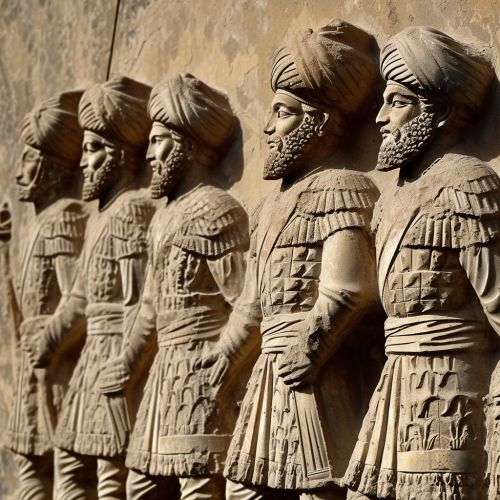Achaemenid Dynasty
Origins of the Achaemenid Dynasty
The Achaemenid Dynasty, also known as the Achaemenid Empire, was the first of the Persian Empire to rule over significant portions of Greater Iran. The dynasty was founded by Cyrus II, known as Cyrus the Great, in 550 BC. The dynasty draws its name from Achaemenes who, from semi-legendary accounts, was a ruler of Persis in the 7th century BC and the progenitor of the dynasty.


Expansion under Cyrus the Great
Cyrus the Great, a significant figure in the history of the Achaemenid Dynasty, initiated the rapid expansion of the empire. He first conquered the Median Kingdom, which was under the rule of his grandfather, Astyages. Cyrus then turned his attention to the west and conquered Lydia and its wealthy king, Croesus, in 546 BC. The conquest of Lydia extended the reach of the Achaemenid Empire to the Aegean Sea, opening up opportunities for further expansion into Europe.
Reign of Darius the Great
Following Cyrus the Great, the Achaemenid Dynasty was further expanded under the rule of Darius I, also known as Darius the Great. Darius ascended to the throne in 522 BC and immediately faced a series of rebellions throughout his empire. After successfully quelling these rebellions, Darius embarked on a series of military campaigns that significantly expanded the empire's territories. His most notable conquests include the Indus Valley, Thrace, and Macedonia.
Administrative System
The Achaemenid Dynasty is notable for its complex administrative system. The empire was divided into several provinces, known as satrapies, each governed by a satrap. This system allowed for efficient control over the vast territories of the empire. The satraps were responsible for collecting taxes, maintaining order, and providing military support to the central government.
Cultural Achievements
The Achaemenid Dynasty was a period of significant cultural achievements. The empire was known for its architectural grandeur, with magnificent structures such as the Persepolis and the Mausoleum at Halicarnassus. The Achaemenids also developed a system of roads, known as the Royal Road, which facilitated trade and communication throughout the empire.
Decline and Fall
The decline of the Achaemenid Dynasty began during the reign of Xerxes I. His unsuccessful military campaigns against Greece and the subsequent rebellions in Egypt and Babylon weakened the empire. The final blow came with the invasion of Alexander the Great in 334 BC, leading to the fall of the Achaemenid Dynasty and the establishment of the Hellenistic period.
